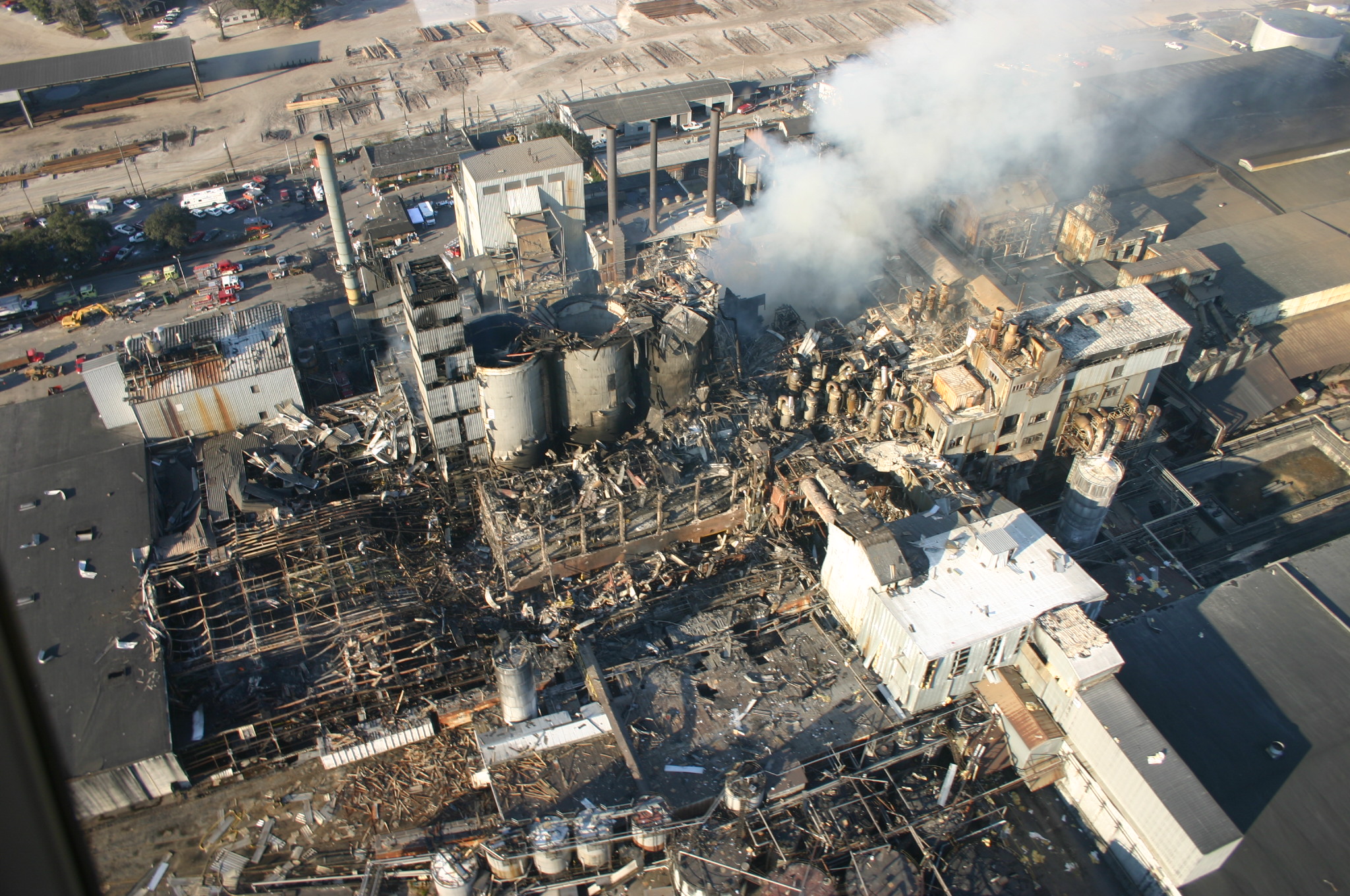
Aerial view of 2008 Imperial Sugar Accident
© US Chemical Safety Board
Friday’s reported metal dust explosion in Jiangsu, China, is another reminder of the tragic and deadly consequences of combustible dust accidents, a hazard with which the US Chemical Safety Board is all too familiar. Just last month the CSB released its final report and safety video on the 2010 metal dust explosion and fire at the AL Solutions metal recycling facility in New Cumberland, West Virginia. This incident killed three workers and injured a fourth.
The AL Solutions incident is one of nine serious combustible dust incidents investigated by the CSB since 2003, including the Imperial Sugar disaster near Savannah, Georgia, in 2008 as well as three combustible dust incidents over a six month period in 2011 at the Hoeganaes facility located in Gallatin, TN. These nine explosions and fires caused a total of 36 deaths and 128 injuries. These tragedies include a 2003 incident at the Hayes Lemmerz manufacturing plant in Huntington, Indiana, which cast and machined aluminum automotive wheels. The series of explosions was fueled by accumulated aluminum dust, a flammable byproduct of the wheel production process. An explosion inside the plant’s dust collection system propagated back into the facility, where it ignited dust that had settled on horizontal surfaces. Plant mechanic Shawn Boone, 33, was killed in the explosion, and two others were injured.
I would like to take this opportunity to emphasize the CSB’s longstanding recommendation resulting from its 2006 Combustible Dust Hazard Study to the Occupational Safety and Health Administration to address this deadly hazard in the United States. Preventable combustible dust explosions continue to occur, causing worker deaths and injuries. From 2008 until 2013, the CSB documented 50 combustible dust incidents resulting in 29 fatalities and 161 injuries. In 2013 the Board designated the issuance of a general industry dust standard as the CSB’s first “Most Wanted Safety Improvement.” The CSB believes it is imperative for OSHA to issue a comprehensive combustible dust standard for general industry with clear requirements for preventing dust fires and explosions.